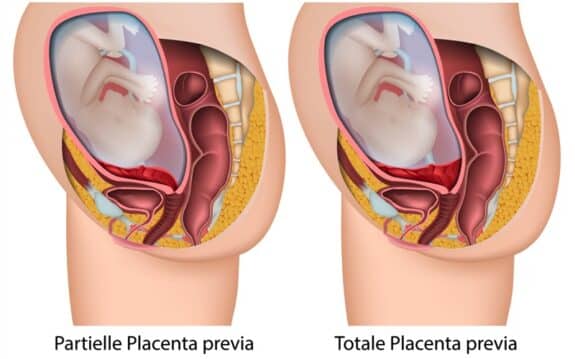The placenta is a crucial structure during pregnancy. It provides baby with nutrients, oxygen, and it removes waste. Unfortunately, some mothers have a placenta that rests partially or completely over their cervix. This condition, known as placenta previa, can be dangerous if not monitored and correctly treated. Learn more with help from the following information.
Causes and Risk Factors
Although the exact cause of placenta previa is unknown, medical science shows that certain women may be at higher risk than others. This includes women who:
- Have had at least one previous pregnancy;
- Have had placenta previa with a prior pregnancy;
- Have scars on their uterus from surgery (cesarean, removal of uterine fibroids, etc.);
- Are pregnant with multiples;
- Age 35 or older;
- Use cocaine;
- Smoke; and
- Are an ethnicity other than Caucasian.
It is important to note that women with risk factors may not develop placenta previa. Likewise, women may develop the condition, even if they do not have any risk factors.
Symptoms and Complications
Women with placenta previa may first learn of their condition after experiencing bright red vaginal bleeding. This bleeding is not typically accompanied by pain, but the mother may also experience contractions (which are generally non-productive). Expectant moms may then call their OBGYN or visit an emergency room to discuss their concerns. The physician may then order an ultrasound (abdominal or transvaginal), which can detect if placenta previa is the cause of her symptoms.
Complications that may arise from placenta previa can include severe and potentially life-threatening bleeding (especially during labor, delivery, or immediately after delivery) and premature birth. If the latter occurs, the baby may be at risk for complications related to early delivery (i.e. respiratory problems, developmental issues, vision problems, etc.).
(IMPORTANT: Mothers should call their doctor immediately if they experience any form of bleeding during pregnancy. If the bleeding is severe, an emergency room visit should be made.)
Treatment of Placenta Previa
Some cases of placenta previa resolve on their own, as the uterus grows. In cases where it does not resolve, treatment will depend on several factors, including the:
- Amount of bleeding the mother is experiencing,
- Health of the mother and baby,
- Position of the placenta,
- Stage of pregnancy, and
- Whether the bleeding has stopped or not.
Situations involving little to no bleeding may include a treatment plan of rest and a limit on activities that may trigger bleeding (i.e. intercourse, exercise, etc.). However, the mother may be advised to seek immediate treatment if the bleeding starts again or becomes heavy. Heavy bleeding requires closer monitoring, and may even require a blood transfusion. If the baby is close enough to term, he or she may be delivered via cesarean (which is the safest option when the placenta is partially or completely covering the cervix). However, if the placenta is low-lying but does not cover the cervix, a vaginal delivery may still be an option.
Coping with Placenta Previa
Given the risks and potential complications involved with placenta previa, mothers may become anxious, worried, depressed, or overly sensitive to normal pregnancy issues that seem frightening. Unfortunately, these added stressors can have an adverse effect on mom and baby. As such, it is important that mothers seek support and learn how to cope with the emotional distress connected with their condition. A few tips for doing this may include:
- Online support groups;
- Using bed rest time to pamper yourself;
- Mentally and emotionally preparing for a cesarean;
- Finding games and activities to do while on bed rest;
- Purchasing baby items to shift your focus over to baby’s homecoming;
- Speaking to close friends and family; and
- Asking your doctor lots of questions about your condition and treatment plan.







